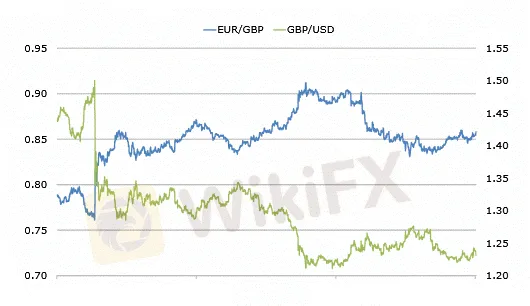简体中文
繁體中文
English
Pусский
日本語
ภาษาไทย
Tiếng Việt
Bahasa Indonesia
Español
हिन्दी
Filippiiniläinen
Français
Deutsch
Português
Türkçe
한국어
العربية
Currency Correlation Explained
Abstract:Have you ever observed that while one currency pair rises, another one falls? What if, as a result of that identical currency pair falling, another currency pair appears to be copying it and falls as well?
Have you ever observed that while one currency pair rises, another one falls?
What if, as a result of that identical currency pair falling, another currency pair appears to be copying it and falls as well?

If you answered yes, you've just seen currency correlation in action.
If you responded “no,” you should spend more time watching charts instead of doing less vital activities like sleeping, eating, or playing Fornite.
But don't worry, we'll start at the beginning and break everything down for you...
Currency. Correlation.
The first half was simple. Currency. There's no need for an explanation.
The second half of the game. It's still simple. A relationship between two items is called a correlation.
What is Currency Correlation?
Correlation is a statistical measure of how two securities move in relation to one other in the financial sector.
Currency correlation, on the other hand, indicates whether two currency pairings move in the same, opposing, or completely random directions over time.
It's vital to remember when trading currencies that because they're exchanged in pairs, no one currency pair is ever completely isolated. (Did our tongue-twister statement about “currency” just confuse you?)
Unless you want to trade only one currency pair at a time, you must grasp how various currency pairings move in respect to one another.
ESPECIALLY if you don't understand how currency correlations effect the amount of risk your trading account is exposed to.
You may be KILLED if you don't know what you're doing while trading many pairs on your trading account at the same time!
Murdefied! Destroyed! This cannot be emphasised enough.

Do not be oblivious to relationships.
Correlation Coefficient

The correlation coefficient, which varies between -1 and +1, is used to calculate correlation.
A perfect significant relation (correlation coefficient of +1) means that the two currency pairings will always move in the same direction.
A perfect negative correlation (a correlation value of -1) indicates that the two currency pairings will always change direction.
If the correlation is zero, the movements of two currency pairings are said to have absolutely ZERO or NO connection, meaning they are entirely unrelated and random. We don't know how one couple will interact with the other.

You'll discover what currency correlation is and how to utilise it to become a better trader and make more responsible risk management decisions in this class.
Disclaimer:
The views in this article only represent the author's personal views, and do not constitute investment advice on this platform. This platform does not guarantee the accuracy, completeness and timeliness of the information in the article, and will not be liable for any loss caused by the use of or reliance on the information in the article.
Read more

Forex is a game that I enjoy playing
These champions have one thing in common: they not only work their butts off, but they also enjoy what they do.

Wait patiently. Maintain your discipline
"Patience is the key to everything," American comic Arnold H. Glasgow once quipped. The chicken is gotten by hatching the egg rather than crushing it."

There isn't a Holy Grail to be found!
Ask any Wall Street quant (the highly nerdy math and physics PhDs who build complicated algorithmic trading techniques) why there isn't a "holy grail" indicator, approach, or system that generates revenues on a regular basis.

Concentrate on the Process. Profits aren't a priority
We've designed the School of WikiFX as simple and enjoyable as possible to help you learn and comprehend the fundamental tools and best practices used by forex traders all over the world, but keep in mind that a tool or strategy is only as good as the person who uses it.
WikiFX Broker
Currency Calculator







